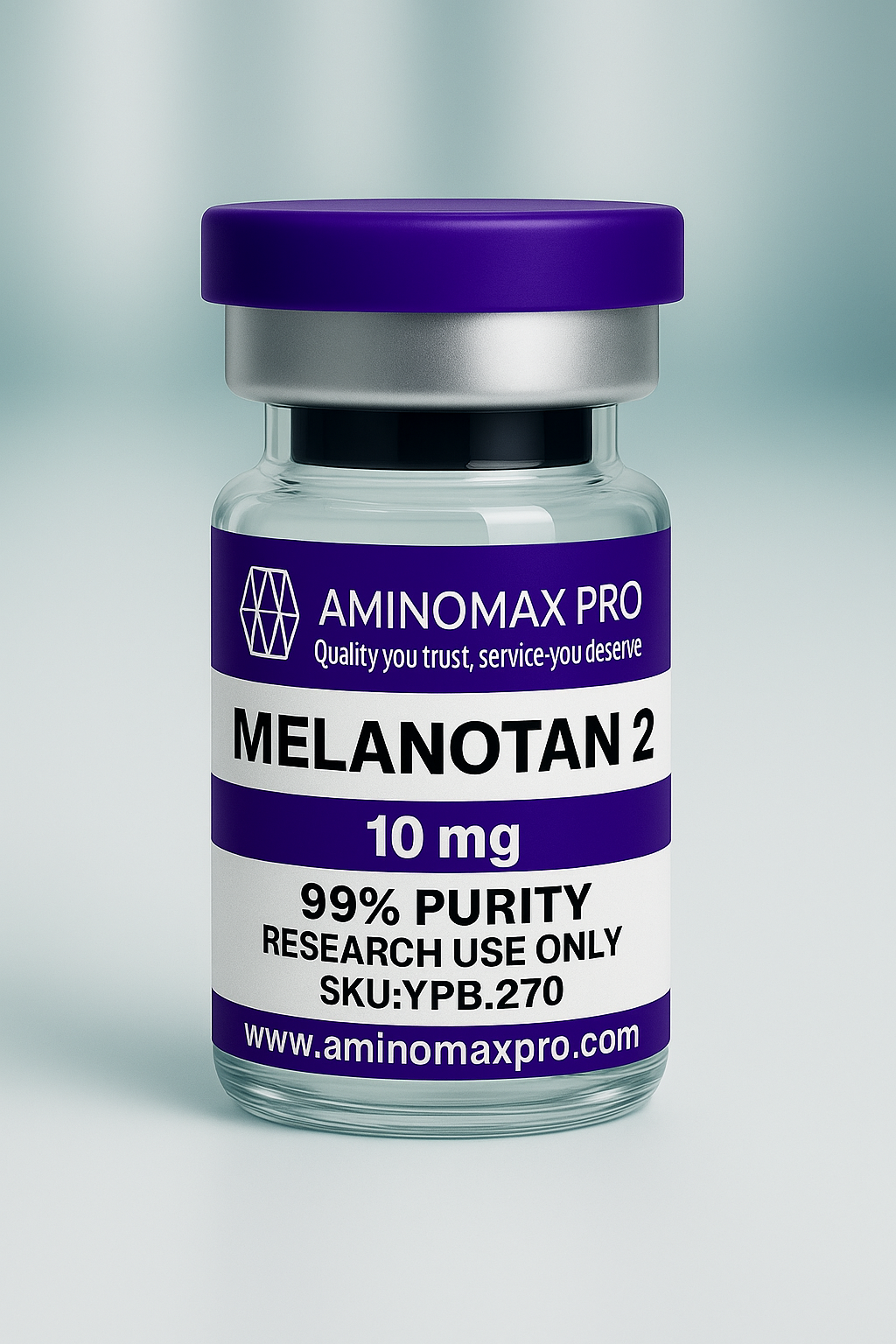Description
Melanotan II – Technical Biochemical Mechanism Profile
(Non-selective Melanocortin Receptor Agonist – Research Use Only)
Melanotan II (MT-II) is a synthetic cyclic heptapeptide analogue of α-melanocyte-stimulating hormone (α-MSH).
In vitro research shows that MT-II acts as a broad-spectrum agonist at melanocortin receptors MC1R, MC3R, MC4R, and MC5R, triggering intracellular cAMP-dependent signaling and transcriptional activation of pigmentary, metabolic, and neuroendocrine gene networks.
✅ 1. Primary Molecular Targets
Melanotan II directly binds and activates melanocortin GPCRs:
| Receptor | Primary Function in Research Models |
|---|---|
| MC1R | Melanin biosynthesis in melanocytes |
| MC3R | Energy balance and inflammation signaling |
| MC4R | Hypothalamic neuroendocrine and metabolic signaling |
| MC5R | Exocrine gland and immunomodulatory effects |
MT-II has high affinity for MC1R and MC4R, producing strong cAMP accumulation after receptor engagement.
✅ 2. Core Signaling Cascade
Melanotan II activates the Gs-coupled GPCR → adenylate cyclase → cAMP → PKA → CREB pathway.
Key steps:
-
Receptor engagement (MC1R/3R/4R/5R)
-
Adenylate cyclase (AC) activation
-
↑ cAMP intracellular concentration
-
PKA phosphorylation cascade
-
CREB transcription factor activation
-
Upregulation of melanin-synthetic and metabolic genes
✅ 3. Enzymes Activated
| Enzyme / Component | Functional Output |
|---|---|
| Adenylate Cyclase (AC) | Converts ATP → cAMP following receptor activation |
| Protein Kinase A (PKA) | Phosphorylates CREB and downstream transcription machinery |
| Tyrosinase (TYR) | Rate-limiting enzyme for melanogenesis |
| TYRP1, TYRP2 | Enhance eumelanin production and melanosome maturation |
✅ 4. Melanogenesis Gene Targets (MC1R Pathway)
Melanotan II stimulates pigment-related gene transcription via MITF (microphthalmia transcription factor):
| Category | Gene Examples |
|---|---|
| Enzymatic | TYR, TYRP1, DCT/TYRP2 |
| Melanosome Transport | RAB27A, MYO5A |
| Structural | PMEL17 |
MITF elevation is a hallmark molecular response in melanocyte signaling assays.
✅ 5. Metabolic & Neuroendocrine Signaling (MC3R/MC4R)
In hypothalamic and metabolic research models, MT-II activation leads to:
-
cAMP → PKA → CREB transcription
-
↑ expression of POMC, CART, and anorexigenic neuropeptides
-
↓ orexigenic genes such as NPY and AgRP
(measured in neuronal cell-line studies)
✅ 6. Immune & Anti-Inflammatory Pathways
Melanocortin receptors also regulate inflammatory gene programs:
-
↓ NF-κB signaling
-
↓ transcription of TNFA, IL1B, IL6
-
↑ IL-10 anti-inflammatory response
These effects are observed in macrophage and dendritic-cell research models.
✅ 7. Second Messengers
| Messenger | Mechanistic Role |
|---|---|
| cAMP | Central second messenger for melanocortin activation |
| PKA | Phosphorylates MITF and CREB |
| CREB | Drives gene transcription for pigmentation, metabolism, and neuropeptide regulation |
| Ca²⁺ (minor) | Involved in melanocyte vesicle transport |
✅ Mechanistic Summary
-
Synthetic α-MSH analogue
-
Potent MC1R–MC5R agonist
-
Strong activation of cAMP/PKA/CREB cascade
-
Upregulates pigmentation genes (MITF → TYR / TYRP1 / DCT)
-
Modulates metabolic and inflammatory transcriptional profiles in vitro
✅ Research-Only Classification
Melanotan II is not a drug, supplement, or cosmetic.
It is supplied solely for controlled in-vitro laboratory research and is not for human or animal use, ingestion, injection, or topical application.


